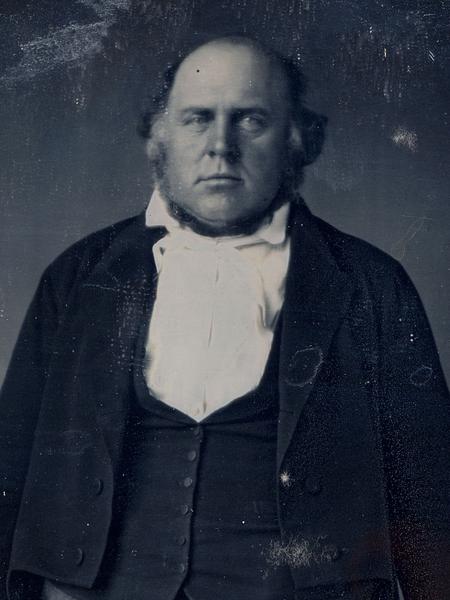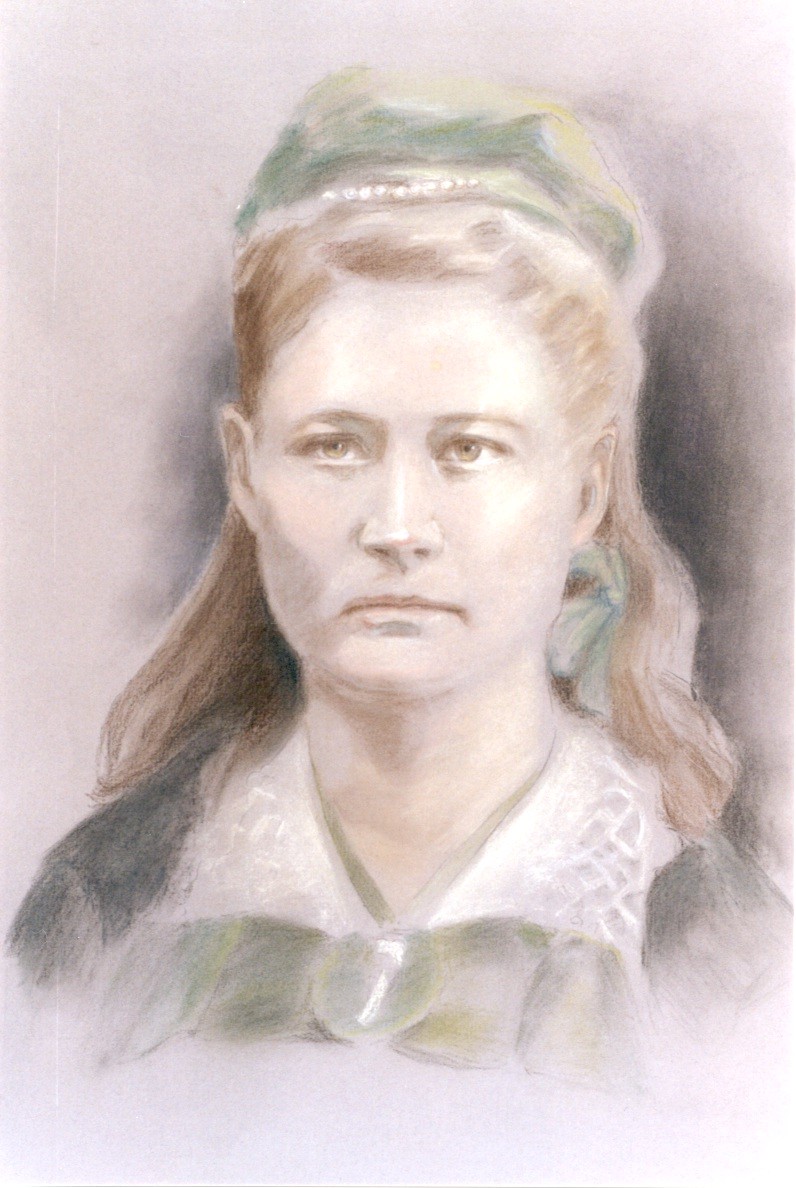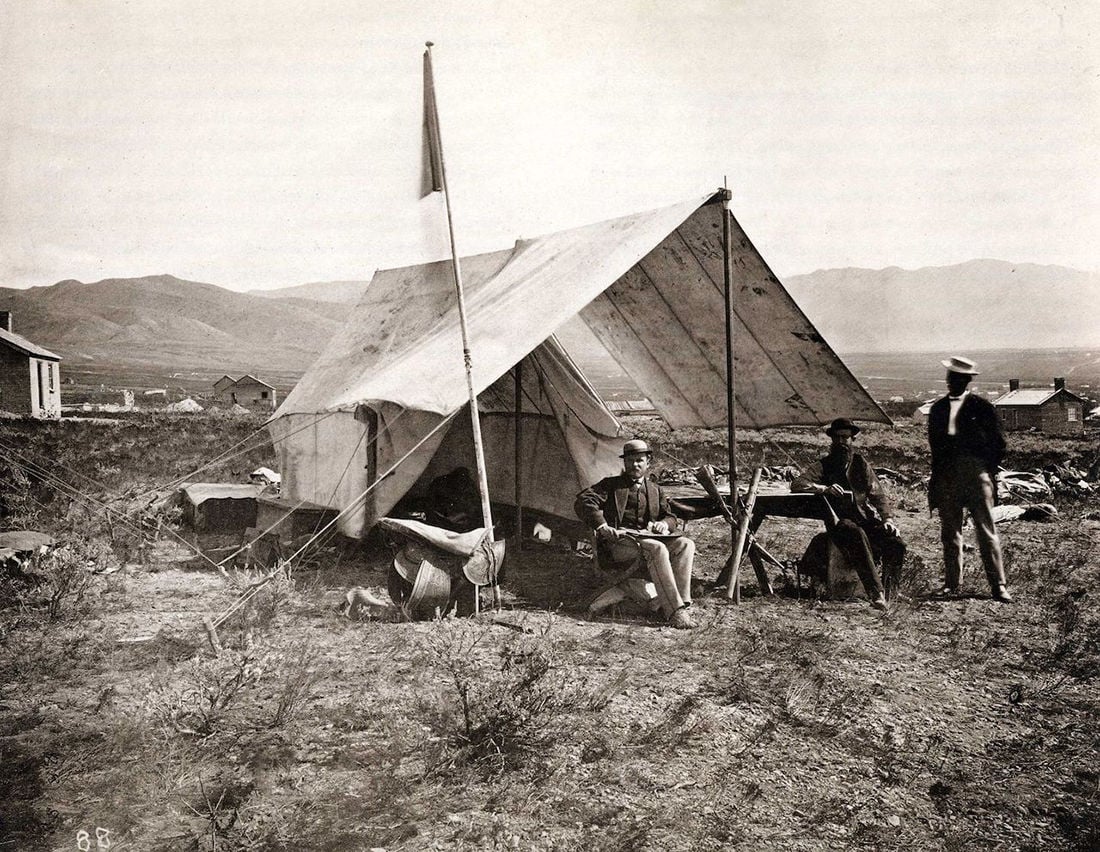
James Godson Bleak
Title: The Annals of the Southern Mission: A Record of the History of the Settlement of Southern Utah
Editors and Contributors: Aaron McArthur and Reid Neilson.
Forward: Elder Steven E. Snow
Introduction: Brandon J. Metcalf
Pages: 850
Price: 124.95
Limited Print Run in Smyth Sewn Binding

If you study LDS Pioneer history than you owe James Godson Bleak a debt of gratitude, and you may not even know who he is. Bleak (1829-1918) was baptized into the LDS Church in 1851 in England. In 1856 he and his family sailed on the ship Horizon to the United States where they joined the Martin Handcart Company. He kept a diary of his experiences in that company that contributes much to the understanding of that ordeal. In 1861 Bleak was among

those called by Brigham Young and George Albert Smith to join the “Southern Mission” and settle the St George area. At that time Bleak was “set apart” to the additional responsibility of being the mission’s “regional historian” (see pp. xv-xvi). Over the next 39 years Bleak created and collected the records of the mission, including the minutes of various meetings and events, letters and documents, transcripts of sermons and dedications, announcements of callings and responsibilities, general news and events in the region, etc. By 1900 Bleak had many records and documents, but no “official” history of the mission. He began to get pressure from Church authorities to produce such a record. In 1901 Bleak, who was then in his 70’s, was provided with an office in the St George temple so that he could focus on completing his task. Over the next seven years Bleak turned his 39 years-worth of documents into a 2,000 plus page history of the Southern Mission that narrated each year in the settlement’s history from 1849 to 1900.
After Bleak produced “The Annals” copies ended up in several archives, including the archives of The Church of Jesus Christ of Latter-day Saints. For many years the only way that the “Annals” could be studied was for interested persons to journey to and spend time and money researching in theses selected archives. Then, in 2003, they were sort of made more widely available when they were included among the documents released by the LDS Church in its 74-disc, 1,299 dollar “Selected Collections from the Archives of The Church of Jesus Christ of Latter-day Saints” set. But until Kofford produced this version of the “Annals”, it had never been made easily available to the general public.
This Kofford edition of the “Annals” is 850 pages long and consists almost entirely of the documents created by Bleak. Supplementary material in “Annals” are brief and include: a short forward by LDS Church Historian Steven Snow who is a great-great-grandson of Bleak, an “Editor’s Preface” that provides all of the editorial methods used in the book, a 12-page introduction to the Southern Mission, Bleak, and the history that he created by Brandon Metcalf, some limited footnotes, and an extensive index. There are no maps, illustrations, or timelines included in this volume and there is no biographical directory/register. While such things would have been cool, as produced, “Annals” is already HUGE measuring 10.25×7.25×2 inches and weighing in at nearly 2 pounds. I can understand that it would have been nearly impossible to include such supplementary materials and still produce “Annals” as a single volume. This would have added an even higher price tag and would have further limited its potential audience. If I had one mild complaint about this book, it would be that I would have liked for the editors to have written more and longer footnotes that provided greater historical context and details for some of the people and events that are mentioned in Bleak’s records. But again, I understand that with as large as “Annals” already is, this would have been impossible for Kofford to include without making this a very expensive, multi volume work.
As enormous as “Annals” is, and with all of the years and history it covers, there is no way for me to describe all of the cool, fascinating, moving, and occasionally troubling history that a reader will encounter in its pages. I will however, highlight a few points to whet potential readers appetites. While Bleak’s history is usually general and sweeping in its scope, it also has it’s touching moments of up-close individual stories. As an example, this moment from the lives of John and Caroline Lee:

“Friday, 7th February 1862 while the last of J. D. Lee’s family were preparing to leave Fort Harmony, and his wife, Sarah Caroline was in the act of making up a bed, a sudden gust of wind blew down a partition wall, which, in the fall, broke through the lower floor, killing two of the children, George A. and Margaret Ann. Two other children had a narrow escape from sharing a similar fate” (p. 59).
I LOVE that such details are included. While the big, epic stories of history are important and to be expected in a record such as this, for me it is the small, personal stories that give history heart and meaning so I am glad the Bleak felt to work such moments into his history. One of the “troubling” aspects that I alluded to was the almost casual way that Bleak includes incidents of violence against Native Americans. The following excerpts are a little longer, but give important and disturbing details of the Mormon settler’s reactions to Natives whom they found or believed to be guilty of crimes

“On the 18th (of January, 1866), a scouting party from Capt. Andrus’ Command took two prisoners while in the act of killing a beef. They were brought in, and on the 19th, examined, but nothing of importance could be obtained. Neither threatenings nor promises availed anything; and although a rope was thrown across a beam, and they were told that unless they told us the truth they would be hanged, they still persisted in declaring ignorance of what had been done. But, one said he had had a dream that the Navajos had been here. He gave information of a small band of indians camped about 10 miles out. A party was sent after them, who found they had moved camp about 5 miles farther. They were overtaken at sunrise on the 20th. Two indians were killed and five captured.
Whilst this party was out, the indian in camp was induced to confess his knowledge of the death and whereabouts of the bodies of Brothers Whitmore and McIntyre. He went with a small party and showed the place where they lay.
A wagon was sent out, and whilst those with the wagon were taking up the bodies, the five prisoners were brought up to the place, in charge of eleven men; among the indians taken, were found the clothes of the murdered men, some money, fresh sheepskins and a few other things, which stood as evidence against them of their guilt. This meeting was too much for the brethren to stand, so they turned the prisoners loose and shot them on the ground where the murdered bodies lay. Thus did retribution overtake them on the scene of their crime. This makes seven {indians} killed. We have one prisoner in camp from whom we hope to get more information.
We have heard of a large band of indians, camped on the Pahreah, and as soon as our supplies come up, we shall march on to them, with prayers in our hearts that the Lord will use us as means in His hands to punish them for their crimes” (pp. 125-126)
Shortly after committing these retaliatory murders the Mormons captured a Native who had killed a non-Mormon miner:
“They (the Mormon militia) took Okus, the murderer, out of the wagon, where he was chained, and putting one end of a chain around his neck and attaching the other end to the horn of a saddle, set off at full speed for Meadow Valley, 10 miles, which they made in one hour and ten minutes. The indian of course was quite exhausted through traveling so far at such a speed. …
On the return of the company to Panaca Okus saw, by the preparations, that he was to be killed. He said, through an interpreter, that he knew he had bad blood in him and that it ought to be poured out, but, he asked to be shot instead of hanged. His request was not granted. He was hanged and died without a struggle.
From information given by Elder Nebeker to Mr Woodman, the company of fifteen set out for the camp of indians under Moroni at Clover Valley, in quest of Bush-head. This indian was taken prisoner in the settlement. Moroni and his band upon invitation of the settlers went from their camp to the settlement, and were informed that Bush-head was about to be hanged for his crimes. Moroni preached to Bush-head in relation to his evil course, and considered the judgment just.
Bush-head was then hanged in the presence of settlers and indians” (p. 130).
I realize that “Frontier Justice” was different than what we are used to in the 21st century, but given the modern Mormon habit of focusing on how friendly their ancestors were supposed to have been to the Natives whom they saw as descendants of the Book of Mormon peoples, it is important to see these details of how casually violent they could be to them as well.

There are many, many others interesting stories and details that Bleak included in the “Annals”. 1877 is a particularly fascinating year and Bleak recorded it in more detail than many of the other years. Among the events detailed from that year are the completion of the St George Temple, its private and public dedication ceremonies, the record of the only LDS general conference to take place in St George (held in conjunction with the temple dedication), and the formation of the St George United order including the documents that outlined all of its rules, bylaws, and contracts. Among all of these important details of these historical 1877 events was a moment that I personally found amusing when the First Presidency recommended that members from other areas who wanted to come for the conference and dedicatory events in St George ought to bring a “tent” along and “camp out in this beautiful climate” (p. 454).

To be frank, “Annals” is probably not for everyone. Unless you are as weird as I am you are not going to plop down on a beanbag or in an easy-chair and read it for an afternoon’s entertainment. It is full of names, lists, lists of names, minutes of meetings, more lists, letters, and have I mentioned lots of names? But while it may not appeal to the casual reader, “Annals” is a treasure to the dedicated reader and historian. You could spend years sifting and panning through this book without mining all of its nuggets. There are details of Southern Utah history that would not exist without “Annals.” As Metcalf explains in his Introduction, “Much of the surviving documentary record of the Dixie region is the direct result of Bleak’s efforts … The documentary sources penned by Bleak, … ‘form the basic core of the history’ of the region and ‘without them the history of Utah’s Dixie would be greatly limited … 1880s’. The Annals remain a beginning point for any scholar exploring pioneer Utah and more especially southern Utah.” (p. xiv and xiii, quoting Andrew Carl Larson).
At 124.95, “Annals” is significantly more than your average book, but it is not your average book, it is an investment. I’m going to be honest, until “Annals” came out I had never heard the term “Smyth Sewn”, and quite frankly, I’m still not entirely sure what it means. BUT I can tell you this, “Annals” is a GORGEOUS book. It is a wonder to behold. When I lay it open on my desk it is a thing of beauty. It is a fine example of solid book craftsmanship. “Annals” was made to last and Kofford deserves all the kudos for producing such an excellently put together book. And that is just the physical book, add to that the trove of information that “Annals” contains and it is very much worth the price.
One important note: “Annals” is not numbered, BUT was produced in a limited print run. I spoke to the publisher the last week of May and was told that at that time there were about 100 un-spoken for copies. When I checked out Amazon mid-July the online retailer listed it as “Currently Unavailable”. If you are interested you should waste no time in contacting Kofford Books or perhaps specialized Mormon book retailers such as Benchmark Books in Salt Lake or Confetti Books in Spanish Fork, Utah.

For more on the “Annals” read this Q&A with the editors of this volume